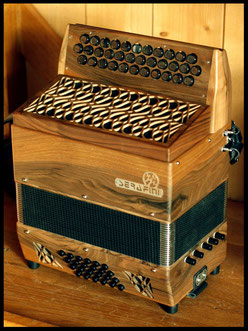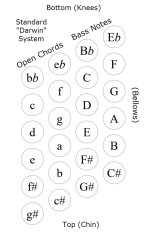I've seen some recent discussions on "less is more" with so-called "simpler" systems and I found myself in agreement with some of the comments. It is true that having fewer options can often spur some creative thinking and workarounds. When I acquired got this box at Thanksgiving with "just" 3 rows and 24 bass buttons, I thought it would be primarily for Irish and other Folk / Trad and had no expectation of using it for other genres like this.
Someone mentioned this tune other night at the pub where I was playing. I'm always up for a challenge so I gave it a go with an off the cuff rendition, It wasn't half bad, so I came home and worked up a more robust arrangement and this is the result...
Someone mentioned this tune other night at the pub where I was playing. I'm always up for a challenge so I gave it a go with an off the cuff rendition, It wasn't half bad, so I came home and worked up a more robust arrangement and this is the result...





